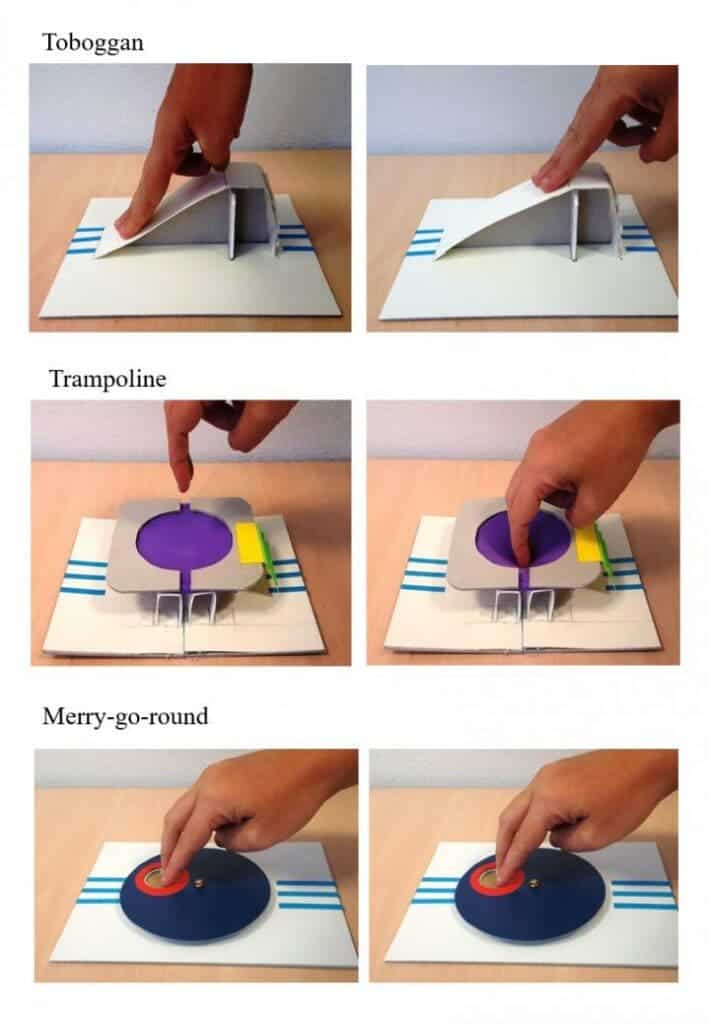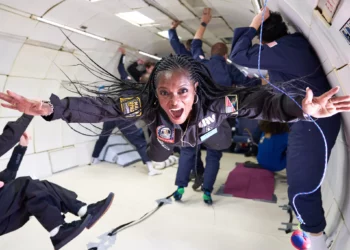
Blind children are at an obvious disadvantage from their sighted counterparts, the latter of whom have access to more learning opportunities thanks to their extra sense. Aiming to narrow this gap, researchers have devised books with tactile illustrations that make it easier for children to follow along by exploring 3D mini-scenarios with two fingers. This approach is particularly useful for studying history, the researchers said.
Moving fingers as moving legs
The advent of tactile writing systems, such as Braille, for the visually impaired was a game-changer. The braille alphabet, numbers, and punctuation are represented through three-dimensional tactile bumps that can be read via touch by people who are blind or who have low vision.
In the same way that braille leveled the playing field in terms of reading, psychologists at the University of Geneva in Switzerland are trying to do the same for illustrations.
If you visit the children’s books section in any library, you’ll notice a wide range of storybooks and informational books filled with colorful, interesting pictures. Before they can read or even recognize the letters of the alphabet, these illustrations serve as visual lessons, serving an important educational role. The bright colors and appealing images add interest as an adult reads aloud.
Tactile illustrations are designed to serve the same role as visual illustrations — and they’re not exactly new. For decades, publishers have been working with professionals who have experience in helping children with disabilities to produce tactile books. These typically employ story box objects, which are real objects related to the book, alongside tactile illustrations, as in pages with tactile features that allow the child to use their fingers to interpret maps, diagrams, or the form of objects. For instance, a page might have raised lines and shapes that follow the contour of a human hand or teddy bear.
These books are certainly useful but the team led by Edouard Gentaz, a professor of psychology at the University of Geneva, wants to add to the experience by introducing a new immersive layer.
In collaboration with the non-profit publishing house Les Doigts Qui Rêvent, the researchers have designed 3D scenarios that are meant to be explored with two fingers. According to the authors, this new type of tactile illustration stimulates the body’s experiences in interaction with objects.
The two fingers act like two legs. “These movements can be used to simulate actions such as climbing stairs, running or jumping on a trampoline,” said Dannyelle Valente, first author of the study and a researcher at the Université Lumière Lyon 2 and the University of geneva.
In a new study published in the journal PLOS ONE, the researchers tested these illustrations on eight blind children and 15 sighted children aged 7 to 11. Another cohort consisting of blind and sighted children of the same age had to recognize the same objects depicted with traditional texture technique act as a control to compare the outcomes of the results.
“The results showed that the gestural exploration process activates the sensorimotor patterns associated with the depicted object, meaning it’s easier for blind and sighted children to identify it,” said Professor Gentaz.
A prototype children’s book, called Balade des Petits Doigts – Little Fingers Do The Walking, has been produced in association with Les Doigts Qui Rêvent and will soon be available for parents and children to read together, regardless of whether they are blind or not.
“Tactile books that use gestures and body simulations have a high potential for sharing since the sensory experiences are the same for sighted children and blind children,” added Dr. Valente.






